On Sunday afternoon Nov 19, 2023 Local Cloth (LC) hosted a spinning party. It was actually the regular monthly meeting time for the LC Spinners Interest group down at the studio (408 Depot St, Asheville, Western NC).
I didn’t take a single picture at the event, so some of the photos you see are from other times. I had the urge to snap photos you see, but my hands kept moving to the spinning wheel instead.
Spinning Interest Group at Local Cloth (June 2023). Photo by Susette Shiver
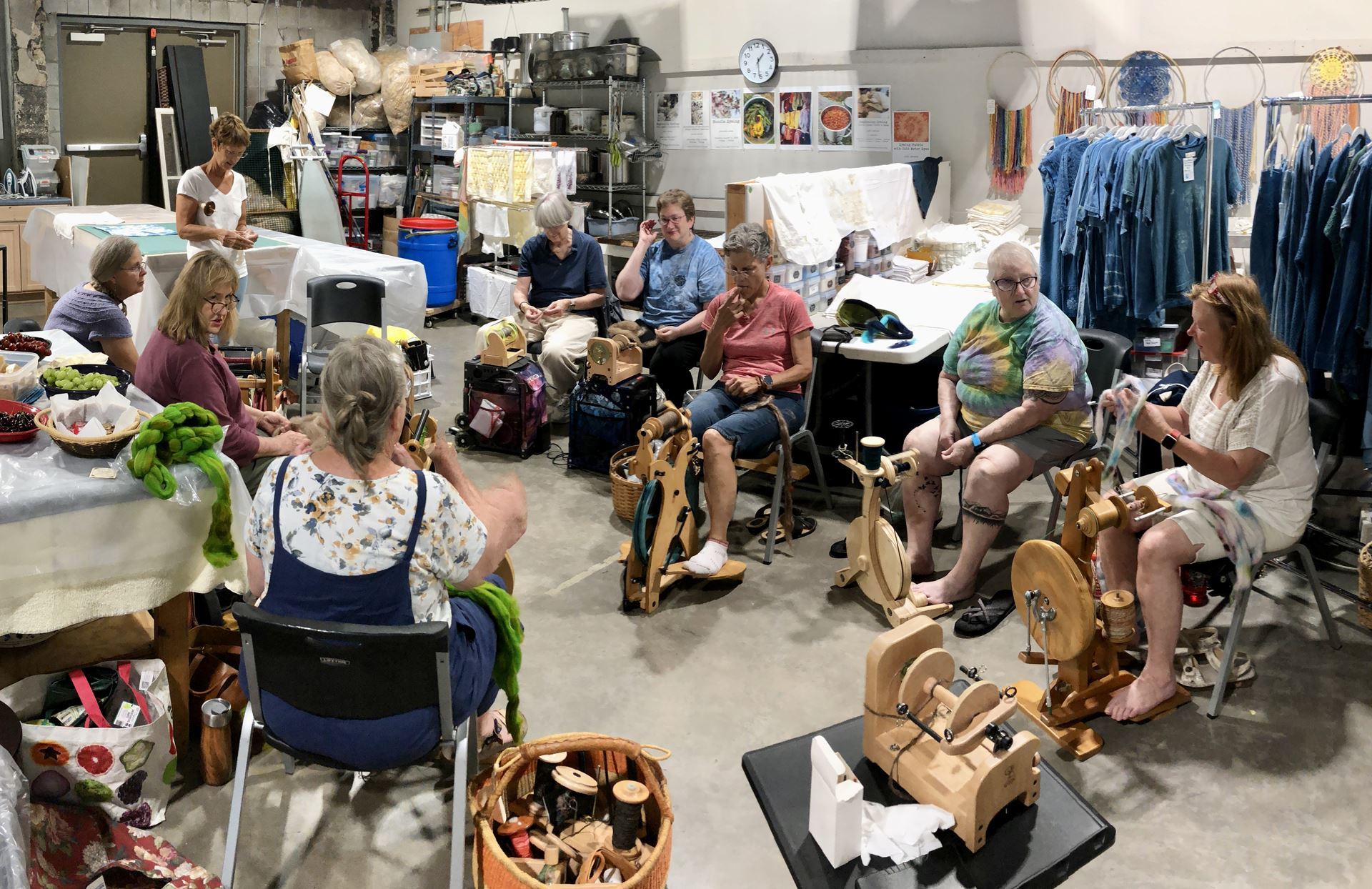
My first spinning wheel. Photo by Susette Shiver

In preparation for the event, all the long tables had been pushed back to form a rectangle. Inside the rectangle chairs were arranged to face inwards, forming a large circle. Twenty two spinners assembled together with all but a few bringing spinning wheels. Unbelievably, of the 19 women spinning (one couldn't because she was missing a piece of her wheel assembly, and two didn't spin because they were the guest speakers). In all, only two of the wheels were identical: a small type of e-spinner. About 5 participants brought e-spinners and the rest brought portable wooden floor models, all different yet similar: wheel that goes round, tension to control the spinning process, and foot treadles to generate rotation. What is an e-spinner? Rather than spinning wheels with one or two treadles worked with the feet to generate the spin, the e-spinners rely on electricity: plug-in or battery pack.
The fiber colors were wonderful. Everyone had different types of batts, roving, rolags, or top to spin. All the fiber was hand dyed. I was plying yarn using the chain ply method, Beth spun art yarn, Lorena was using a long draw. Some folks were novice spinners, some lapsed spinners, and many were long-time spinners; everyone spun while chatting or listening.
Hand dyed fiber for spinning. Photo by Susette Shiver. The results of participation in the Dye Lab monthly get-together at Local Cloth.
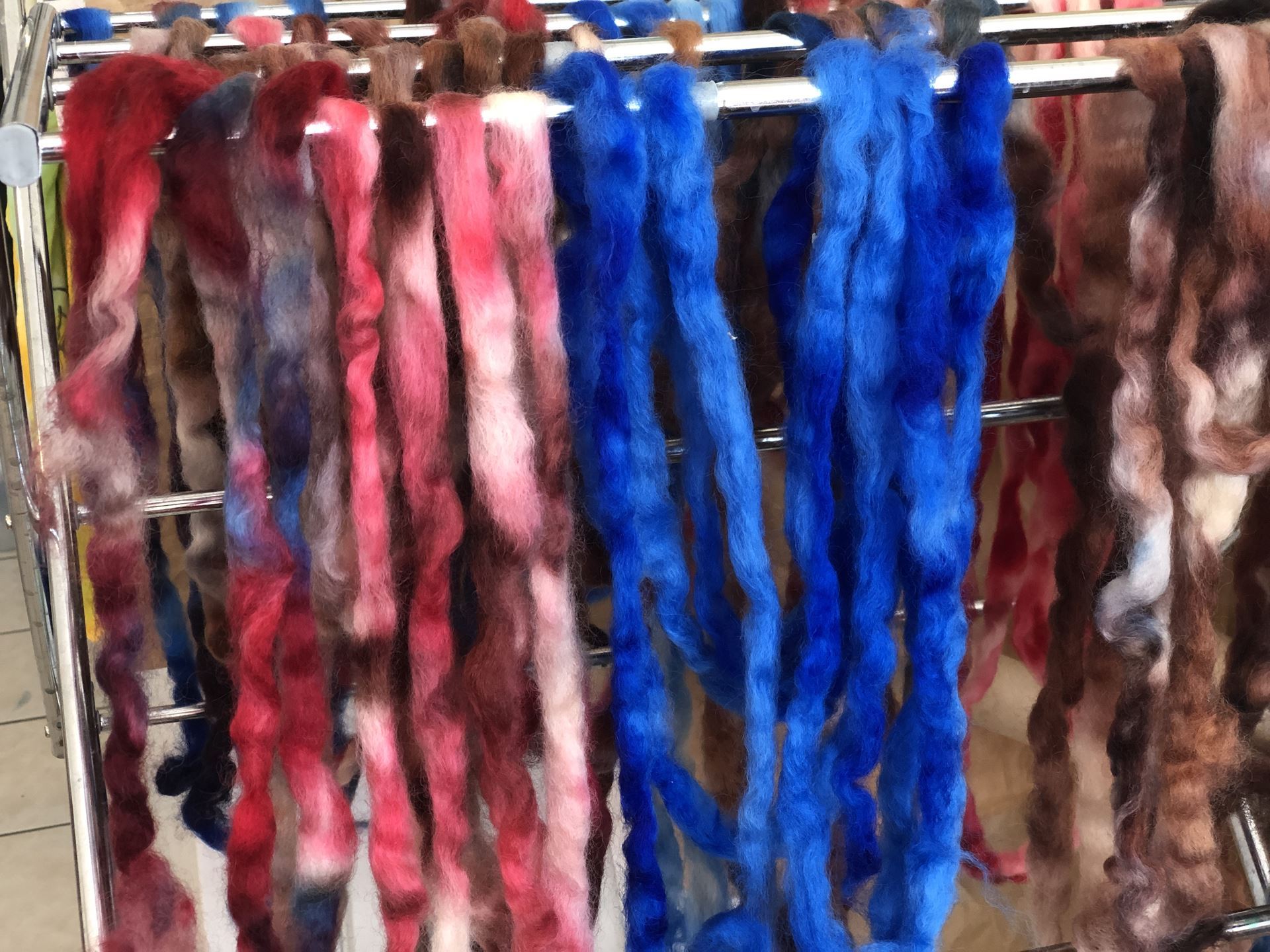
When all were settled down, Judi Jetson introduced herself (instigator of the Spinning Interest Group, major mover of LC and longtime spinner), then everyone introduced themselves in turn. Finally, our guests spoke. Martha Owen from the John C. Campbell Folk School spoke about her teaching and roles at the Folk School and how she lives the fiber and banjo life in the country. Martha then introduced Elizabeth Johnston (shetlandhandspun on Instagram).
Elizabeth Johnston (middle) in Detroit area "wooly" gathering. Her pattern is displayed in different colors. (Photo from Martha Owen)
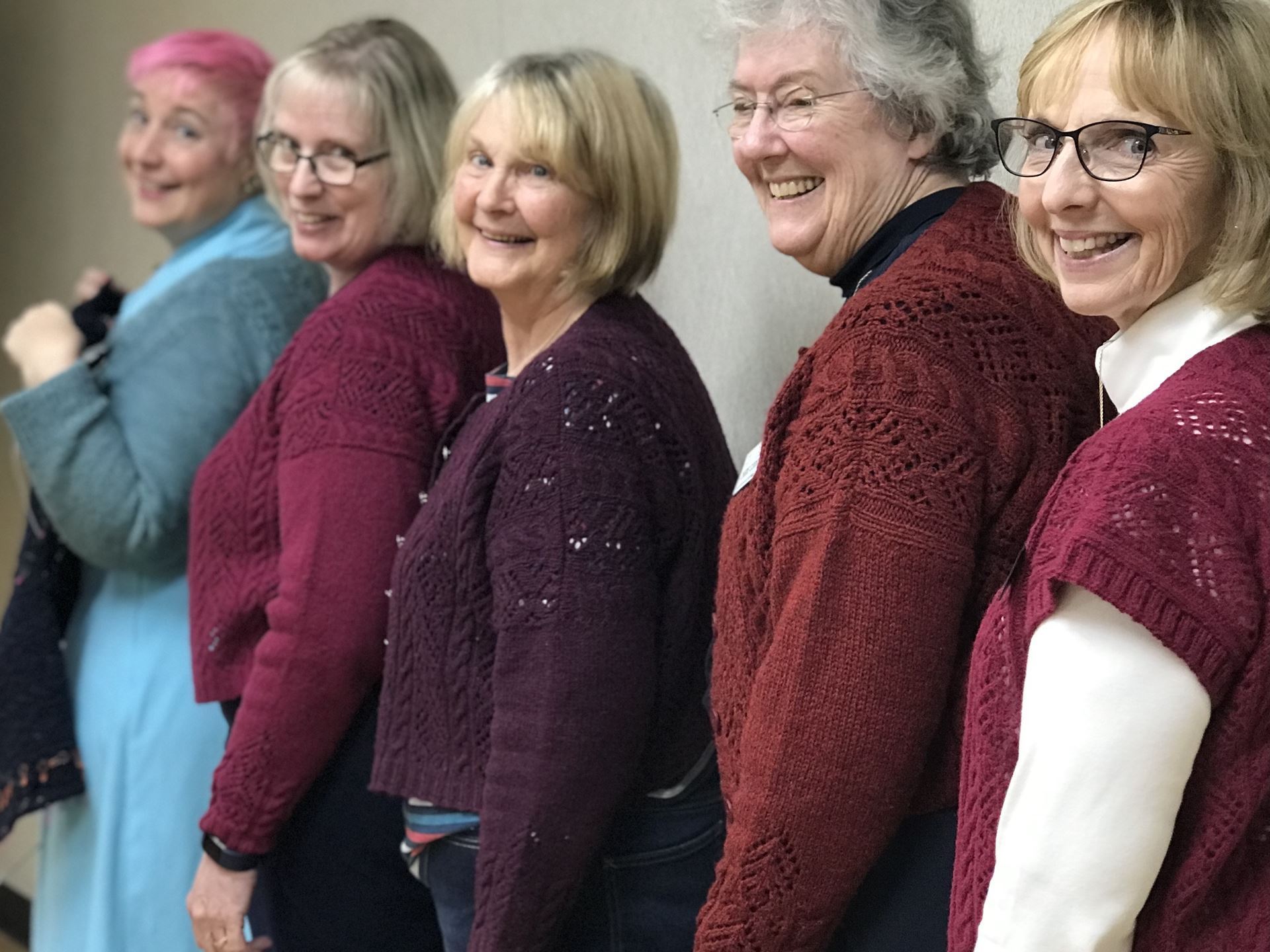
Elizabeth is from Shetland and teaches at the Folk School with Martha. In between teaching they often tour together giving workshops and lectures whilst spreading information via their works. Elizabeth has many personally knitted examples of traditional Fair Isle knitting. Sometimes she is laughingly accused of being too contemporary in her pattern designs. She brought to show us an example of a hand spun, dyed, and knitted Hap, a Fair Isle Allover sweater, and one of their Shetland fleeces. Wonderfully soft it was and full of lanolin (grease).
Click link here to see Shetland sheep and the scenery.
Elizabeth and others feeling a Shetland fleece. Photo from Martha Owen.
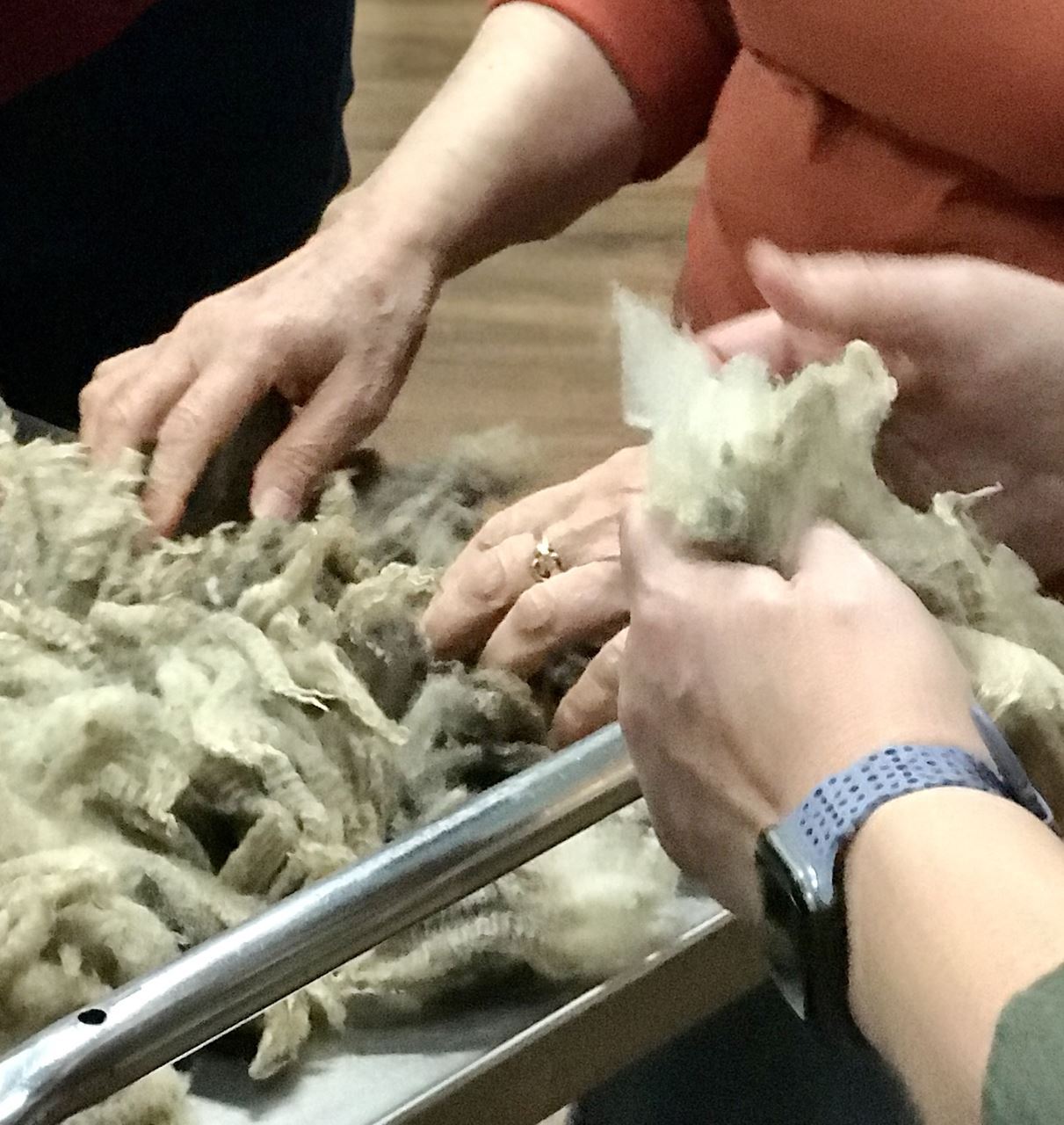
Shetland Islands. Photo link here.
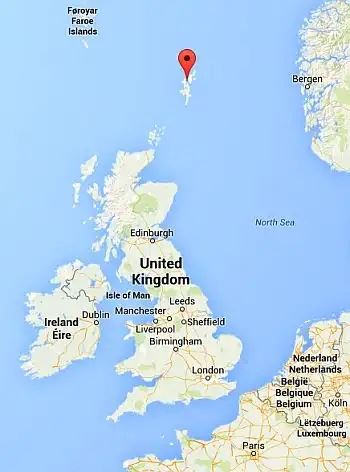
Elizabeth hand processes the fleece, then spins lace weight yarn and yarn for her Fair Isle sweaters, hats, haps, and dags. She uses natural dyes to create colors, and tones of brown, grey, and white come directly from the undyed fiber.
What are the meanings of Allover, Fair Isle, hap, and dag? Illustrations and explanations can be found on Elizabeth's Instagram page:
- Shetland Allover (Fair Isle knitted Shetland sweater with a pattern that is all over the sweater and not just on the yoke, for example),
- Haps (lace Shetland blankets for babies),
- Dags (fingerless mittens)
Martha Owen wearing an Allover, click here.
We were able to view her slides and had the opportunity to ask questions on the above (new to some of us) words such as hap and dap! A few years ago, SpinOff magazine published several articles with photographs that tell more of her story (
Elizabeth Johnston, 2017 and
others)
Did you know that Shetland wool from Shetland is rather much finer (the fiber diameter is smaller) and softer in general than the Shetland wool grown in the US. This is principally because of the diet, genetics, and other sheep life factors. The fleece are much cleaner because of the lack of air pollution that can stick to fleece and cause dirt to stick. There is no dirt or leafy matter there, so-to-speak, since the sheep roam on gorse and the soil is peaty. The peat bits more easily fall away during cleaning and spinning, unlike other vegetable matter that catches in the fleece. The gorse sticks mainly to the belly and neck which is separated from the rest of the fleece. On rare occasions, skirting the fleece results in a handful of thistle (ouch!). The wind is strong, trees are rare, growing only in very sheltered spots such as adjacent to a house. It is windy, cold, and wet much of the time in Shetland. Wool clothing is warm and can be manipulated to maximize retaining heat by choice of spinning and knitting techniques. Spinning Shetland wool "in the grease" keeps your hands coated in lanolin, ...nice!
Enough for now, but I want to explore the differences between Fair Isle, stranded, Intarsia, pattern, and double knitting in the future!
let's spin!
Susette Shiver
